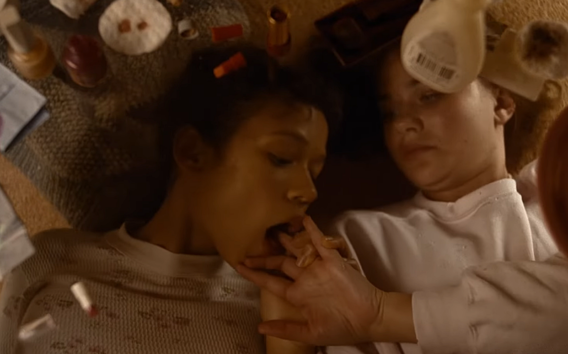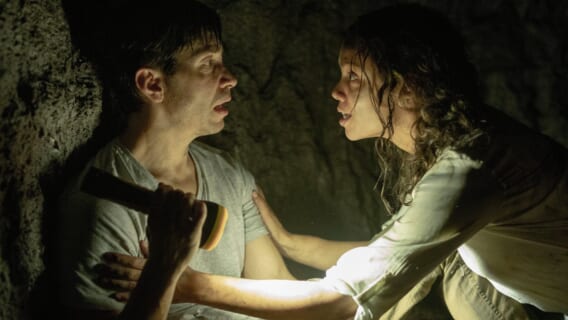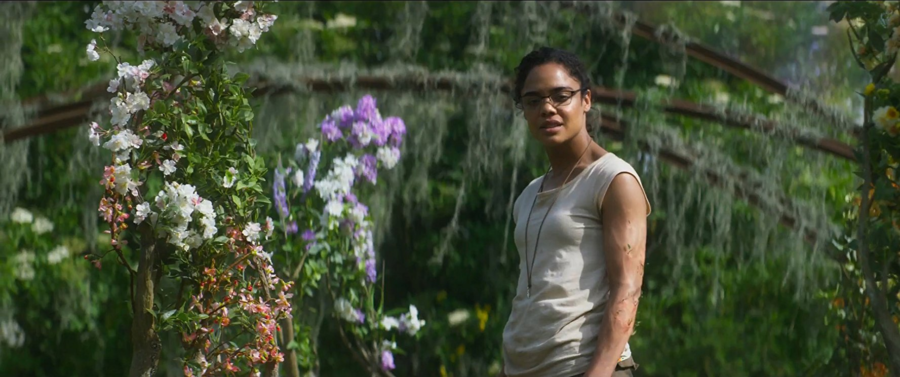Suffering In Silence: Black Women Saving Face in Horror

Horror is a powerful tool. Its function as a genre creates a world in which our greatest fears are real and actualized. It subdues the fears of our real world, and safely puts them behind a screen. But for Black people, Black women in particular, horror is a reflection of reality. Our rare final girls and frequent side characters have to save face to endure danger.
Being dissected, picked apart from skin, to flesh, to guts, to bone, is a common horror trope. The ending of Jeepers Creepers (2001) scared me efficiently enough as a child that I was afraid to close my eyes, scared that Justin Long’s detached skin suit still frozen in terror would jump out at me from the darkness. It’s assumed that this level of brutality is forever unbeknownst to us. In what world would we have to live where there was genuine fear of our bodies being discarded, experimented with, and toyed around using unfamiliar tools? Blood still dripping from where pieces of us have been removed?
Horror And The Black Female Body
But that level of brutality is fathomable to generations of Black women. Our ancestors’ bodies were experimented on in the name of gynecology. With no anesthesia, Black women were subjected to incredible pain as they endured new tools entering and malaffecting their bodies. Enslaved children, too, had their skulls and bones “pr(ied) apart” and “loosen(ed)” all by the same scientist who has been revered long into this century. To the rest of the world, Black women do not experience pain the same as everyone else. This notion carries over into film. As representation increases in the genre within the past decade, Black women characters are portrayed as unwavering, solution-oriented figures in the face of fear.
A few examples of this can be found in Annihilation (2018), Bones And All (2022), and Barbarian (2022). Josie, Maren and, Tess, respectively, are inherently sweet-natured and forced to acclimate to terrors out of their control. Fight or flight is not an option for them.
Hunger and Desire in Bones And All
In Bones And All, Maren is abandoned from the start by her father as a result of her hereditary proclivity for cannibalism. She has not “fed” in years and has been able to hold back her urges until she devours the finger of a friend at a sleepover. In the tape he left to explain his leaving, he tells Maren, “I have to leave you to figure it out for yourself,” saying that she has always been “clever” in hiding her urges. Taylor Russell’s baby face lends well to the character’s age. But, if not for her appearance, it would be easy to forget she is a teenager, left to rebuild an entire life with no guidance and an insatiable need she has yet to understand or control.
Sully, the first fellow eater (what cannibals are called in this world) she meets, is predatory at the start and is a constant source of fear for her as she travels across America. When he starts to frighten her while she is vulnerable, she decides to leave the home where they fed in a poised and careful manner. Then, she meets Lee, another fellow eater and her eventual lover. Her careful, quiet movements contrast his as in their first meeting he kills a man in public in an abandoned garage outside a supermarket, taking his belongings and unafraid of the evidence left on his face and body. Maren tells him to go as “up close you can see blood,” and he is unaffected by her precaution, saying it won’t matter.

Later, when Sully finds her again, she is strangely come despite the shock. She does not scream, jump, or yell. She is without protection, traveling as a vagrant and having left her money with Lee. But, she takes the time to explain how she is afraid that he followed her and does not trust him. There is no chase scene. She does not run into the farmstand looking for help. She tells him simply, she is not going with him.
When he follows her a final time, interrupting her idyllic life in Michigan with Lee, Maren again remains composed and calm, speaking to Sully like a child to appease him until Lee can see him on top of her, overpowering her. There is a methodical look in her eyes as she stays quiet and delivers the final knifed blows to Sully with precision, tearing his innards out by hand without so much as a wince or tear.
Believing Black Women in Barbarian
Tess similarly approaches her fate in Barbarian with consistent problem-solving. She reserves the typical scary movie shrieks and paranoia to get out of the grasp of the monstrous mother from the basement and even attempt to save the white men around her. Against the instincts of any Black viewer anywhere, she stays at the double-booked AirBnB with a strange white man on a dark and stormy night. When the danger below the home is revealed and AJ, the crass homeowner finds himself in the feeding pit, Tess hurriedly tells him to just take the dirtied bottle of soured milk from ‘The Mother,’ to stay alive. Expectedly so, he refuses and is taken. At this moment, with the pit no longer gated, Tess is able to leave.

But as Black women are expected to, she puts herself at risk once again to save someone else. She goes back in a plot to retrieve AJ when the cops don’t believe her story. This decision to go back almost kills her. AJ betrays her and it seems she falls to her death. But her loyalty instead of fear of ‘The Mother’ saves her as she breaks Tess’ fall.
Silent Suffering in Annihilation
Josie from Annihilation seemingly strays from this trope that she has to be strong and painless to live. As a minor character, it’s easy to overlook the shy, mousy role she plays against the more strong-armed and impulsive Anya played by Gina Rodriguez, the gruffness of Ventress played by Jennifer Jason Leigh, or the stone-faced Lena played by Natalie Portman. But, she is the physicist of the group. A hard scientist with a soft voice, grounding the group despite her being the first to be attacked by one of the alien environment’s—the Shimmer’s—amalgamated monsters.

After facing monsters and watching fellow crewmates go insane or die, she succumbs to the strangeness. Josie is the one who comes to the conclusion that the Shimmer is refracting their DNA and assimilating them the same way the monster hybrids were created. Among the chaos, she finds reason. Josie walks off slowly and tells Lena, “Ventress wants to face it, you want to fight it, but I don’t think I want either of those things.” Then, she simply disappears among a field of plants shaped like humans—or what could be humans shaped like plants—assumed to be one of them now.
It’s neither flight nor fight. But, responding rationally to the horror of what could be to come and having to yield calmly to her fear. In both reality and fiction, Black women, across all of these characters, have to compose themselves and sieve their emotions through logic and acceptance. When will we be allowed to be afraid without fear?
Categorized:Editorials

